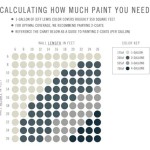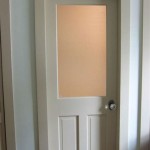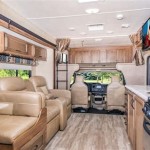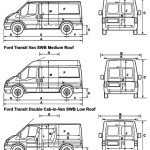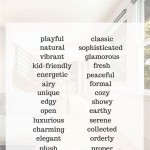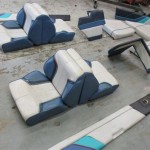What Is Mid-Century Modern Interior Design Style?
Mid-Century Modern (MCM) interior design is a significant and enduring style movement that emerged in the mid-20th century. It is characterized by clean lines, organic shapes, a focus on functionality, and a celebration of natural materials. Spanning roughly from the 1930s to the 1960s, MCM design reflects a post-World War II optimism and a desire for a streamlined, modern way of living. This aesthetic continues to resonate today, influencing contemporary design and remaining a popular choice for homeowners and designers alike.
Understanding the core principles and historical context of Mid-Century Modern design is crucial for appreciating its enduring appeal. The style developed as a departure from the ornate and heavily decorated styles of previous eras, embracing simplicity, practicality, and accessibility. Its roots can be found in the Bauhaus movement in Germany and the work of Scandinavian designers, both of which emphasized functionalism and clean aesthetics. As materials and technologies advanced after the war, designers explored new forms and manufacturing processes that further shaped the look and feel of MCM interiors.
The term "Mid-Century Modern" wasn't coined until the mid-1980s, but the design principles it represents were well-established decades earlier. It encompassed architecture, furniture design, graphic design, and interior design, creating a cohesive and influential design movement. The aim was to bring good design to a wider audience, creating functional and aesthetically pleasing spaces that were also affordable.
Key Characteristics of Mid-Century Modern Design
Several key characteristics define the Mid-Century Modern aesthetic. These elements contribute to the style's overall clean, comfortable, and inviting ambiance.
Clean Lines and Minimalist Forms: One of the defining features of MCM design is its emphasis on clean lines and minimalist forms. Furniture and architectural elements are characterized by their simple, uncluttered silhouettes. This approach promotes a sense of order and spaciousness, avoiding excessive ornamentation or intricate details. The focus is on the purity of the shape and the functionality of the design.
Furniture often features tapered legs, streamlined profiles, and a lack of unnecessary embellishment. Architectural details such as large windows, flat roofs, and open floor plans further contribute to the clean and minimalist aesthetic. Ornamentation is often limited to the inherent beauty of the materials themselves, rather than applied decoration.
Organic and Geometric Shapes: Mid-Century Modern design embraces both organic and geometric shapes, often combining them in harmonious compositions. Organic shapes draw inspiration from nature, incorporating curves, rounded edges, and flowing lines. Geometric shapes, on the other hand, provide a sense of structure and order.
Furniture might feature rounded backs and seats, while accessories could include abstract geometric patterns. The juxtaposition of these contrasting shapes adds visual interest and prevents the design from feeling overly rigid or sterile. This balance creates a dynamic and engaging environment that feels both modern and comfortable.
Functionalism and Practicality: Functionalism is a core principle of Mid-Century Modern design. Every element is designed with a purpose, prioritizing practicality and usability. This emphasis on function doesn't come at the expense of aesthetics; rather, the design aims to integrate form and function seamlessly.
Furniture is designed to be comfortable and ergonomic, providing support and ease of use. Storage solutions are integrated into the design, often featuring clean lines and hidden compartments. Open floor plans promote a sense of flow and connectivity, making the space more functional for everyday living. The goal is to create a space that is both beautiful and highly practical.
Use of Natural Materials: Mid-Century Modern design celebrates the beauty of natural materials. Wood, particularly teak, walnut, and oak, is a prominent feature in furniture, flooring, and architectural details. These materials are often left in their natural state, showcasing their grain and texture.
Other natural materials such as leather, wool, and cotton are also commonly used in upholstery and textiles. The use of natural materials adds warmth and texture to the space, creating a sense of connection to the outdoors. This emphasis on natural elements contributes to the overall organic and inviting feel of MCM interiors.
Emphasis on Natural Light: Maximizing natural light is a key aspect of Mid-Century Modern design. Large windows and glass doors are used to bring in ample sunlight, creating bright and airy spaces. Open floor plans further enhance the flow of light, allowing it to penetrate throughout the interior.
Window treatments are typically minimal, avoiding heavy drapes or elaborate curtains that would block natural light. The goal is to create a seamless connection between the indoor and outdoor environments, blurring the lines between the two. This emphasis on natural light contributes to the overall sense of openness and spaciousness that characterizes MCM design.
Key Elements in Mid-Century Modern Interiors
Beyond the core characteristics, specific elements are frequently found in Mid-Century Modern interiors. These elements contribute to the overall cohesive and recognizable aesthetic.
Iconic Furniture Pieces: Certain furniture pieces have become synonymous with Mid-Century Modern design. These iconic designs are often characterized by their clean lines, organic shapes, and innovative use of materials. Examples include the Eames Lounge Chair and Ottoman, the Noguchi coffee table, and the Saarinen Tulip chair.
These pieces are not only aesthetically pleasing but also highly functional and comfortable. They are often considered works of art in their own right and can serve as focal points in a MCM interior. Investing in a few well-chosen iconic furniture pieces can instantly elevate the style of a room.
Color Palette: The Mid-Century Modern color palette is generally warm and inviting, featuring a mix of earthy tones and vibrant accents. Common colors include browns, oranges, yellows, greens, and blues. Neutral colors such as white, beige, and gray are often used as a backdrop, allowing the bolder colors to stand out.
The color palette is often inspired by nature, reflecting the organic shapes and natural materials that are central to the style. Pops of bright color can be introduced through accessories, artwork, and textiles, adding visual interest and personality to the space. The overall effect is a balanced and harmonious color scheme that feels both modern and comfortable.
Textiles and Patterns: Textiles play an important role in Mid-Century Modern interiors, adding texture, warmth, and visual interest. Common fabrics include wool, cotton, linen, and velvet. Upholstery often features solid colors or simple geometric patterns.
Geometric patterns, such as atomic motifs, starbursts, and abstract shapes, are also frequently used in rugs, curtains, and pillows. Textural elements, such as shag rugs and knitted throws, add depth and dimension to the space. The careful selection of textiles can greatly enhance the overall feel of a MCM interior.
Accessories and Décor: Accessories and décor play a crucial role in completing the Mid-Century Modern look. Simple and uncluttered décor is preferred, avoiding excessive ornamentation or clutter. Common accessories include ceramic vases, abstract sculptures, and geometric artwork.
Houseplants are also a popular addition, bringing a touch of nature indoors. Lighting fixtures often feature clean lines and geometric shapes, such as Sputnik chandeliers and arc lamps. The careful selection of accessories can add personality and character to the space, while maintaining the overall minimalist aesthetic.
Applying Mid-Century Modern Design Principles Today
While rooted in the past, Mid-Century Modern design remains relevant and adaptable to contemporary living. These design principles can be applied to create modern interiors while honoring its historical roots, allowing for personal expression and customization.
Blending with Other Styles: Mid-Century Modern design can be successfully blended with other styles to create a unique and personalized space. For example, pairing MCM furniture with contemporary artwork or incorporating industrial elements can create an eclectic and interesting look. The key is to maintain a balance between the different styles, ensuring that the overall aesthetic remains cohesive.
Focus on Sustainability: The emphasis on natural materials in Mid-Century Modern design aligns well with contemporary concerns about sustainability. Seeking out vintage or reclaimed furniture is a great way to incorporate MCM elements while reducing environmental impact. Choosing eco-friendly materials and sustainable practices can further enhance the sustainability of a MCM-inspired interior.
Personalization and Customization: While adhering to the core principles of Mid-Century Modern design, there is still room for personalization and customization. Incorporating personal touches, such as family heirlooms or travel souvenirs, can add character and warmth to the space. Experimenting with different color palettes and textile patterns can also create a unique and individualized look.
Adapting to Modern Living: Mid-Century Modern design can be adapted to suit the needs of modern living. Integrating modern technology, such as smart home devices and energy-efficient lighting, can enhance the functionality and convenience of the space. Updating the layout to create a more open and flowing floor plan can also improve the livability of the home.
The enduring appeal of Mid-Century Modern design lies in its ability to create spaces that are both stylish and functional. By understanding the core principles and key elements of this influential design movement, individuals can create beautiful and comfortable interiors that reflect their personal tastes and lifestyles.

What Is Mid Century Style In Interior Design Inspiration Books Blog

Mid Century Modern Design Defined How To Master It Décor Aid

Mid Century Modern Design Defined How To Master It Décor Aid

Forever A Classic How To Decorate Mid Century Modern Woodgrain

Mid Century Modern Interior Design 20 Ways To Timeless Elegance

Your Guide To Midcentury Style

Midcentury Modern Vs Interior Design Styles Silica

An Interior Design Expert Explains Why Mid Century Modern Will Never Go Out Of Style

Mid Century Modern Design Defined How To Master It Décor Aid

Mid Century Modern Interior Design Explained Foyr
Related Posts

